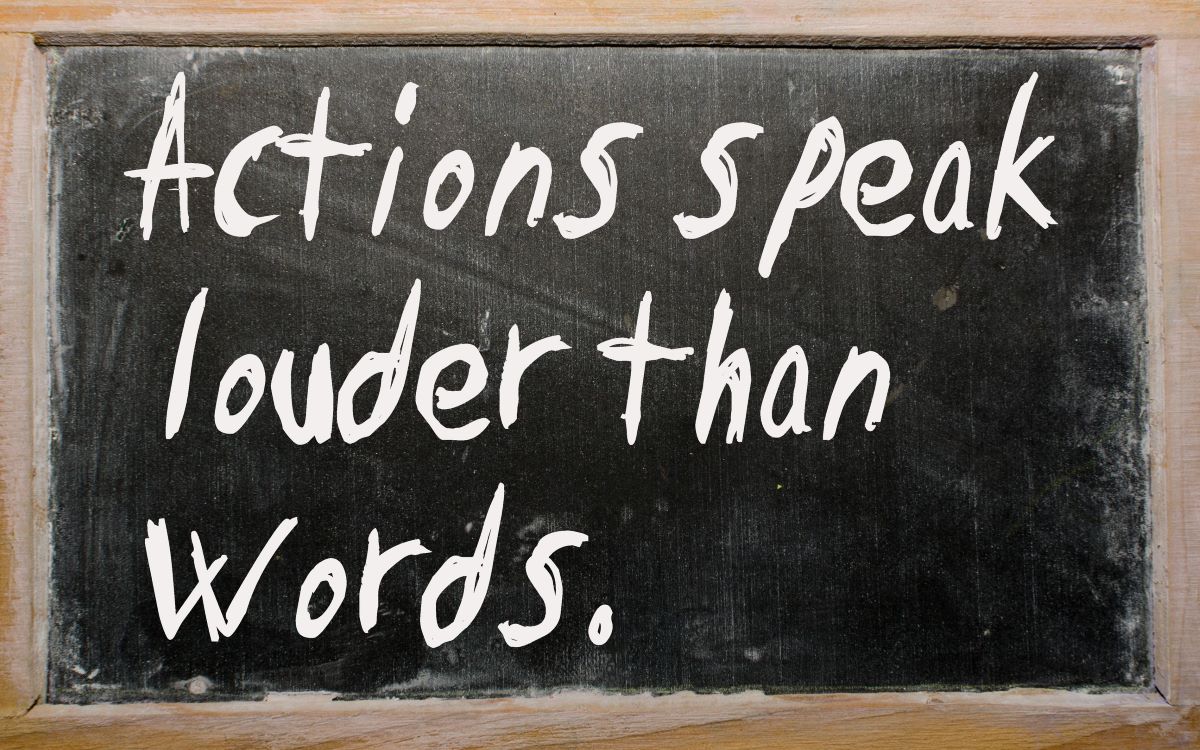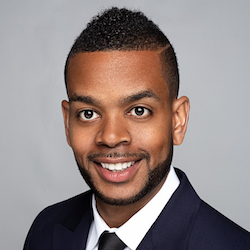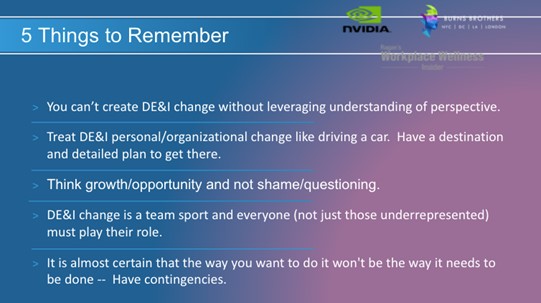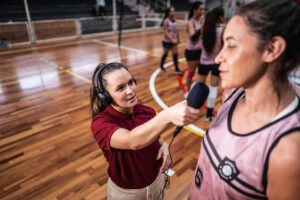DE&I is integral to establishing workplace well-being
Th co-founders of the Burns Brothers agency and Nvidia’s global well-being manager discuss tactics and opportunities for comms and wellness pros to help employees feel like they belong.

After a year of conversation and commitment on diversity and inclusion, 2021 is the year when stakeholders will expect to see results.
With the increasing pressure to show progress on promises to fight systemic inequality and break down barriers in the workplace that hold back people of color, well-being and wellness advocates play a crucial role.
“It’s become imperative to look at well-being from a DE&I lens,” says Deepa MacPherson, global well-being manager for Nvidia. She was part of a panel to discuss the role of DE&I in workplace wellness initiatives for Ragan’s Workplace Wellness Virtual Conference on April 21.

“There are so many different challenges based on different backgrounds and experiences,” MacPherson adds, and she sees the work of the well-being officer as helping employees feel comfortable and secure in the workplace, regardless of where they come from. “We have to have the D&I lens to create the environment where everyone feel comfortable.”
Creating open conversation
When it comes to wellness, DE&I efforts can help to create a space where employees feel like they can bring their full selves to work and openly discuss issues that are affecting their lives.
“Employees will benefit when people are able to talk openly to others,” MacPherson says. She believes that this happens naturally for homogenous groups where “there is a natural ability to feel like they belong and they are comfortable.” When employees of different backgrounds feel like they belong to a group that is “other,” well-being advocates must make it a priority to change that narrative.
“Well-being is about communicating to employees that they are not alone,” MacPherson says.
One example that Nvidia saw was when Black employees came forward to say they had a hard time finding a Black therapist through their employee resource program. Why was that important? Black employees would find themselves describing how they were struggling with microaggressions in the workplace, only to discover their therapist didn’t understand the concepts of what they were talking about.
DE&I touches everything
In order to drive real change, organizations must understand how DE&I touches every part of the business.
“Wellbeing, DE&I and business objectives do not sit in their silos,” explains Michael Burns, cofounder of The Burns Brothers consulting firm and an industry expert who has guided organizations through DE&I journeys. “Often DE&I is placed in its own silo,” he says, “almost like the guest house out back.” Until organizations realize that this work is central to business outcomes, there won’t be real results.

Burns says it’s understanding how DE&I touches everything that allows an organization to develop a plan around a continuum, rather than having one-off training sessions. By tying DE&I work to the everyday work of the rest of the business, you can find ways to constantly improve and push for greater success.
Listening circles
How can you facilitate difficult conversations about race in the workplace? Some organizations are trying to have “listening circles,” small gatherings of employees where people can talk openly about their experiences and hopes for the future.
“They can be effective,” says John Burns, co-founder of the Burns Brothers agency and Michael Burns’ brother. “You have to ask: ‘What will make an employee feel comfortable?’ If employees fear retribution, then you won’t get accurate feedback.”

When you do get a group of people together for a listening circle, make sure that different viewpoints and experiences are represented in the room. “If you put people from the same business unit or same department in a room, you will only hear from people with the same general experience,” Michael Burns says.
“Be intentional about who is in the room to get away from ‘group think.’” Michael Burns argues that listening circles should be tools for education and learning—not just an opportunity for airing grievances or getting employee feedback. “You want listening circles to be mechanisms to promote learning.”
Intersectionality
For organizations that have employee resource groups (ERGs), the Burns brothers advise finding ways for different affinity groups to work together on common causes.
We know that none of us is a monolith, even though we often treat each other as belonging to one category, says Michael Burns. There is an innate assumption that someone form an ERG might just be able to speak on a certain set of issues, when in reality an employee might be Black, a parent and a military veteran. By finding common ground, and encouraging ERGs to work together, change becomes more possible because the number of supporters driving the initiative increases.
“If everyone is helping to roll a stone up the hill, change is more likely,” Michael Burns says. The challenge then becomes finding those common points of emphasis that everyone can rally behind. Everyone will have their own points of emphasis—but how can you get everyone to pull together?
“Base everything that you are doing on insights and include your employees,” advises John Burns. “Once people feel like they are a part of the change, they will mobilize behind that and help roll the rock up the hill. “
Final takeaways
The Burns brothers offer some final takeaways for well-being managers looking to address DE&I within their organizations:








